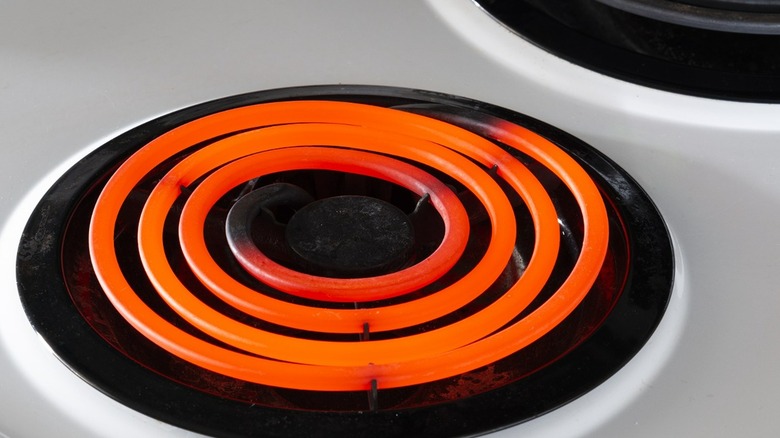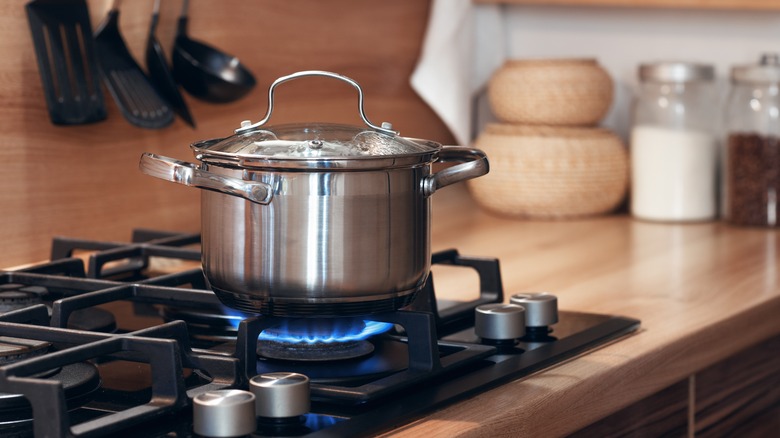Stove Drip Pans Need Love, Too – Here's How To Clean Them
It would be impossible to frequently cook on the stove and expect no crumbs or spills to sneak underneath the burners. Still, many overlook the drip pans during their after-dinner cleaning. This is a non-issue for those with flat-top stoves, but if your burners are raised, it's probably been a while since you made an effort to scrub underneath them.
Frequently maintaining your drip pans will help your kitchen look nicer, smell nicer, and provide an overall feeling of cleanliness. Believe it or not, it's recommended to remove and clean your drip pans each time you use your coil burners. The quicker you do it, the easier it will be — as grime settles, it becomes much more stubborn. In general, you should perform a deep clean of your stovetop at least once a month, especially if you use it often. If you allow too much grime to form, it could increase the chances of a fire.
Cleaning them is as easy as popping off your burner or grate and removing the drip plate underneath, but for extra burnt-on messes you may need to try a few tactics. If this isn't something you usually do anyway, you might have been using your stove all wrong.
A guide to cleaning your drip pans
Before you begin, you'll need to remove the coiled burners. Many times, this can be accomplished by pushing one edge into the drip pan while simultaneously lifting the other edge. Then, you'll pull it up and out of its spot. These coiled burners are connected to the stove using prongs that reach into the drip pan. If you have a gas stove, you'll simply remove the metal grate up top for access.
After taking out the drip pan, you'll soak it in hot water for 10 minutes to loosen up any stuck-on particles. If this doesn't do the trick, you can soak them in ammonia for 20 minutes. After soaking, pour vinegar over the food pan and leave it for another 30 minutes. Then, use baking soda to loosen the grime, and let it sit for an additional 15 minutes. The last step is to rinse it off with hot water one more time, adding more baking soda as needed. If you'd rather, you can clean out drip pans using a mild liquid detergent and a scrubber.
While your drip pans are removed, it's a good idea to clean underneath them as well. It's recommended to use a liquid cleaner, such as a glass cleaner or mild solution, and scrub using a pad made of steel wool. If your stove needs further love, find out how you should be cleaning your stove burners.

